Missouri - Kansas Portion of the Oregon/California Trail
June 21 - 24, 2013
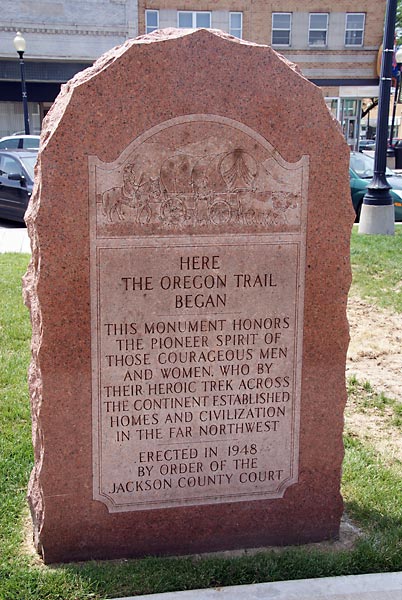
The official start of the Oregon Trail is at the courthouse in
Independence, MO. Most emigrants arrived here by boat on the Missouri
river and purchased supplies for the journey to Oregon or California.
This is also the start of the Santa Fe trail. An alternative starting
point was nearby in Westport, which is now part of Kansas City.
A related trail is the Mormon trail, which parallels the Oregon trail
most of the way to Salt Lake City. It was followed by about 70,000
Mormons heading for the Salt Lake City area. This trail starts in
Council Bluffs, IA and joins the approximate route of the Oregon Trail
in mid - Nebraska.
The Pony Express carried mail between the west coast and the east
between 1860 and 1861. The Pony Express riders mostly followed the
California and Oregon trails, but ended in St.Joseph, Mo, where the
trains could carry the mail further east.
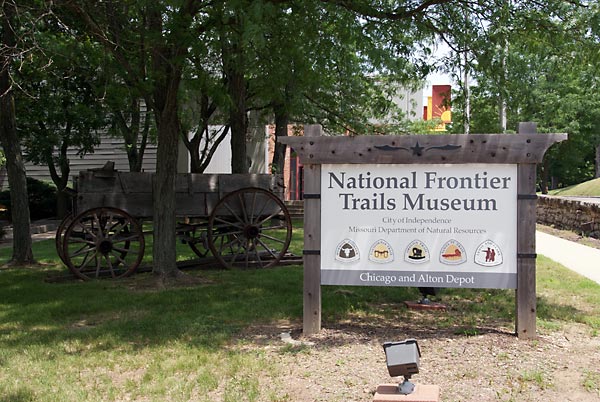
Nearby is the National Frontiers Trail Museum, which covers five
"trails" - the Oregon, California, Santa Fe, Pony Express, and the
Lewis and Clark expedition.
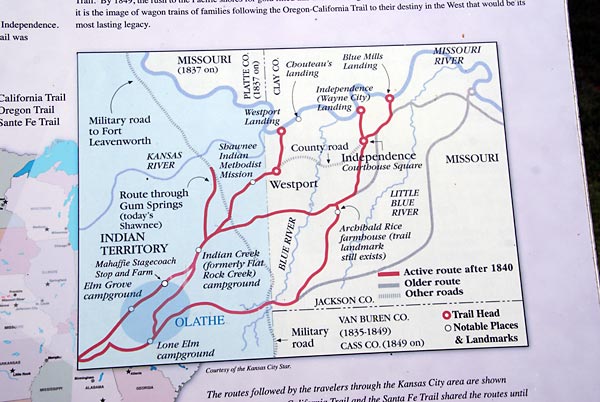
A map of the various trails in the Kansas City area. Once the emigrants
crossed into what is now the state of Kansas, they were leaving the
United States and entering "Indian Country". It was under the
jurisdiction of the U.S. government, but was mostly considered tribal
lands.
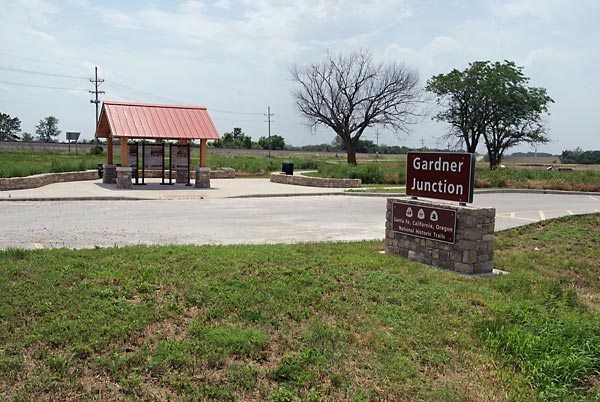
The Santa Fe trail diverged from the Oregon/California trail in
Gardner, KS. It heads 900 miles to Santa Fe in what is now New Mexico.
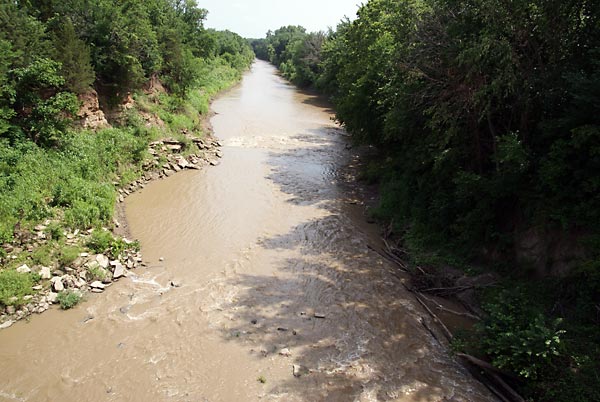
The Vermillion River is typical of the many streams that the emigrants
had to cross. It might take a wagon train two days to get all the
wagons down the steep banks, across the river, and up the bank on the
other side. An additional hazard often encountered was that the water
was polluted. In 1849, a large wagon train encamped here was struck by
cholera, which left 50 emigrants dead within a week.
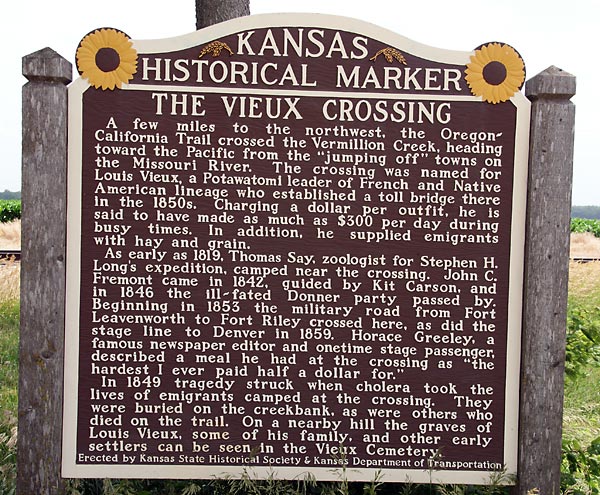
Louis Vieux was an enterprising Potowatomi Indian; he built a bridge
across the Vermillion River and charged $1 for each wagon to use his
bridge to cross the river. It is said that, in busy times, he made as
much as $300 per day, which was a lot of money in those days.
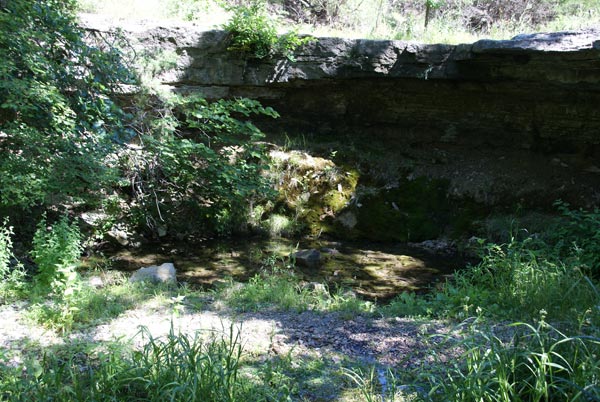
Critical to the emigrants was access to good water. This spring, named
"Alcove Spring", was a popular campsite in northeastern Kansas.The
water was clear and cold, and provided good water even in times of
drought. It was mentioned in many emigrant jounals.
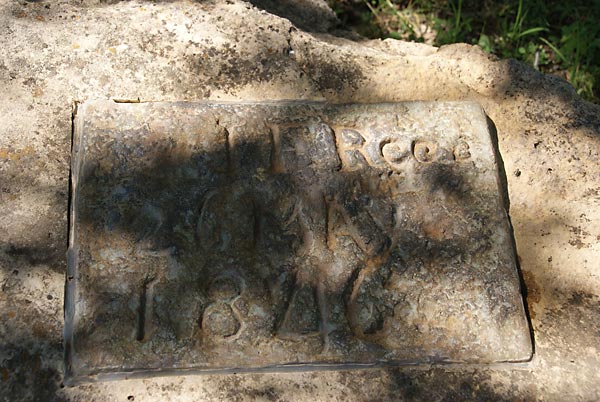
One of the wagon trains stopping at Alcove Spring was the Donner-Reed
train, which spent 5 days here in 1846, waiting for the flooding of the
nearby Blue River to subside. J.F. Reed scratched his name in a stone
above the spring; it is still visible. The Donner-Reed party is, of
course, the infamous wagon train that got trapped in the snows in
Donner Pass in the Sierras.







